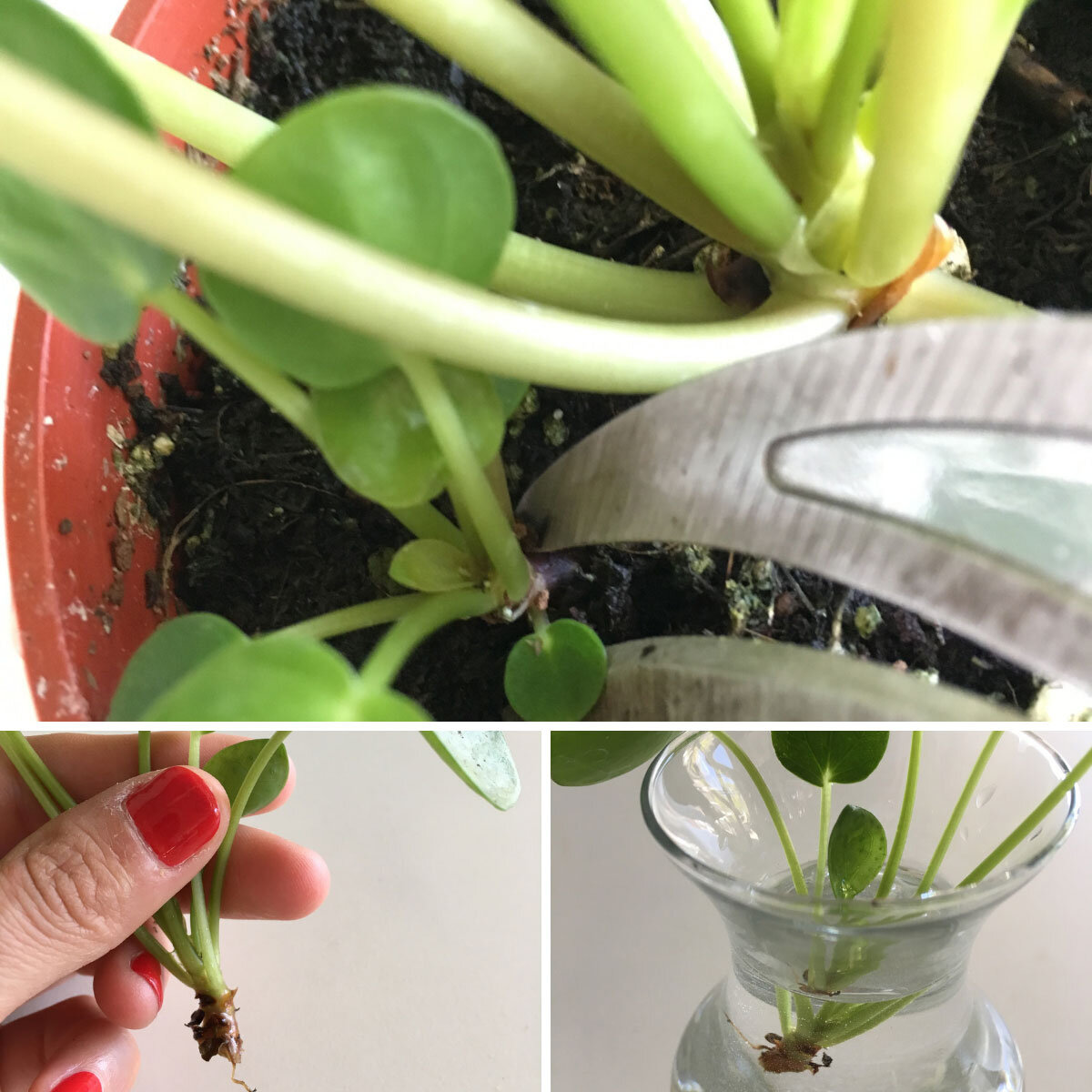Propagation with cuttings is a simple way to multiply your plant, and the Pilea, also known as the Chinese Money Plant or the Friendship Plant, is the perfect candidate! In fact, it gets the nickname “Friendship Plant” because it was traditionally passed on from one friend to another via cuttings. As such, for a long time, it was a hard plant to find on the shelves of local plant shops and nurseries. Luckily, that’s no longer the case, which makes it the perfect gift to send to a friend (even the New York Times agrees it’s the perfect gift!), or get for yourself and pass along cuttings!
If you’re wondering how to care for your Pilea, check out our complete care guide including light recommendations, watering tips and troubleshooting when things go awry.
How to propagate the Pilea
Propagating the Pilea Peperomiodes is incredibly simple:
The “mother plant” is the central stalk of your plant, while the “pups” are smaller offshoots growing in the surrounding soil.
Cut at the base of a pup, and place in water while it roots.
Locate small offsets, or baby Pileas (AKA “pups”), at the base of the plant. You will find these below the main stalk— if your plant doesn’t have any, hold off! They will sprout up soon.
Using a clean blade, cut an offset at the base or closest to the soil as possible.
Place the stem of the offset in a small glass or jar with water. Make sure only the stem or shoot is submerged — do not submerge any leaves, as they will rot (you may need to remove some leaves).
Place in an area with bright, indirect light and wait. You may like to change the water every few days to keep it fresh. After a week or two, you should see roots begin to sprout.
Once the roots have grown to about an inch long, carefully place them in a small pot with fresh soil, gently pressing down on the soil once it’s potted. Keep the soil just moist to the touch for the first few weeks until the plant has taken root.
Good luck and happy propagating! Don’t forget to fertilize your plant once it’s taken root— a gentle fertilizer like Boost Vitaminé natural plant food will help it grow into a healthier and stronger mature plant!
1 TO 1 VIDEO CALL WITH AN EXPERT
Yellow leaves? Worried about watering or struggling with incorrect lighting? Book a call and get truly personalized support for all your plant-related needs.






















